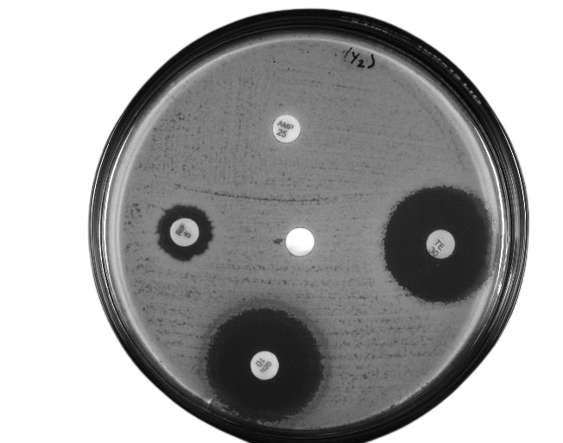Characterization

NATIONAL COLLEGE CULTURE COLLECTION CENTRE
The Identification and Characterization of Bacteria/Fungi/archaea/molds/yeast, NCCCC provides following services as Below.
- Phenotypic characterization
- 16S rRNA sequence analysis:
- Phylogenetic analysis
- MALDI-TOF
- Biolog
- Vitek analysis
Phenotypic characterization:
Bacteria and actinobacteria : Phenotypic characterization which includes Morphological, physiological, and biochemical tests. The test in which under these categories includes, Gram staining, cellular morphology, colonial pigmentation, motility, oxidase, H2S, indole, urease and catalase production and growth at different temperatures (4–37C), Growth at different salt concentrations and different pH were examined, citrate utilization, MRVP, nitrate reduction.
Yeasts: Various physiological and biochemical tests.
Fungi: Microscopic characterization
Phylogenetic tree construction:
The use of 16S rRNA phylogenetic sequence analysis is now accepted as a reliable molecular method for identification of microbial communities. In recent times, the concept of biodiversity in a particular ecosystem has been expressed through the use of phylogenetic tree maps based on gene sequences.
For identification of the closest relatives, newly determined sequences were compared to those available in the databases. The 16S rRNA sequence fetched in the database and it identifies the reference strains and the sequence was edited, aligned and constructed phylogenetic tree using MEGA 6.0 version. This gives the phylogenetic relationship of the organism which is to be tested. Maximum parsimony, maximum likelihood, minimum evolution and neighbour joining algorithms give the idea of the evolutionary relationship like ancestor of the organism and their groupings. The unified tree combining all the algorithms plotted in the neighbour joining tree gives the clear picture of the organism for the further experimental approach.
16S rRNA analysis:
The 16S rRNA gene has become a reliable tool for identifying and classifying bacteria. Over time, the 16S rRNA gene has shown functional consistency and structurally conserved. The length of the 16S RNA gene possesses approximately 1,500 bp which is sufficient for bioinformatics analysis. Analysis of the 16S rRNA gene requires that this gene to be amplified by polymerase chain reaction (PCR) and the resultant PCR product sequenced. The sequence file containing chromatogram further can be analysed and aligned for further identification. The gene sequence can then be matched with previously obtained sequences obtainable from various DNA databases. This method has been so widely adopted that DNA sequence databases are flooded with sequences of the 16S rRNA gene. Almost all new sequences deposited for query have matches and any 16S rRNA gene copy which does not match or less than the prescribed cut-off value of any known bacterial species is believed to be novel.
MALDI-TOF:
A rapid, high-throughput identification method, MALDI-TOF MS, has been introduced in bacterial taxonomy. This system has brought reliability, simplicity and convenience. MALDI-TOF is the only polypeptide fingerprinting-based methods even to be used for bacterial identification. The MALDI-TOF MS technique determines peptide/protein fingerprints for the identification of bacterial species. This technique has the ability to measure peptides and other compounds in the presence of salts and to analyse complex peptide mixtures, making it an ideal method for measuring non-purified extracts and intact bacterial cells.
The cell-smear and cell-extract methods are used for the extraction process and the bacterial cultures to be queried are spotted on the MALDI-TOF plate, and it is placed in the time-offlight (TOF) chamber. Each sample is spotted at least in duplicate, to verify reproducibility. A control specimen of known identity is included to ensure correct identity. The samples are allowed to air-dry at room temperature, inserted into the mass spectrometer and subjected to MALDI-TOF MS analysis. Based on the mass-charge (m/z) ratio the chromatographic spectrum compares with the database and identifies the bacterial species.
Biolog:
The Biolog OMNILOG Identification System or “Biolog” (Biolog Inc, Hayward, California). Different methods have traditionally been used to identify bacteria, yeast and fungi based on biochemical activity. These methods include the oxidase test and the catalase test. A system that utilises automated biochemical methodologies, as an instrument that tests a microorganism’s ability to utilise or oxidise a panel of 95 carbon sources.
The suspension is inoculated in GEN III micro titre plate with a volume of 0.1ml and the plates are incubated in OMNILOG incubator. The end result is a pattern of coloured wells on the microplate shows positive and negative wells remain colourless that is characteristic of that bacterial species. A unique biochemical pattern or fingerprint is then produced when the results are measured. The fingerprint data are analysed, compared to a database, and identification is generated.
Vitek analysis:
The VITEK 2 is an automated microbiology system utilizing growth-based technology. The systems accommodate the colorimetric reagent cards that are incubated and interpreted automatically. The reagent cards have 64 wells that can each contain an individual test substrate. Substrates measure various metabolic activities such as acidification, alkalinization, enzyme hydrolysis, and growth in the presence of inhibitory substances. An optically clear film present on both sides of the card allows for the appropriate level of oxygen transmission while maintaining a sealed vessel that prevents contact with the organism-substrate admixtures. Each card has a pre-inserted transfer tube used for inoculation (described below). Cards have bar codes that contain information on product type, lot number, expiration date, and a unique identifier that can be linked to the sample either before or after loading the card onto the system
There are four reagent cards used for the identification of different organism classes as follows: 1. GN – Gram-negative fermenting and non-fermenting bacilli, 2. GP – Gram-positive cocci, and non-spore-forming bacilli, 3. YST – yeasts and yeast-like organisms, 4. BCL – Gram-positive spore-forming bacilli.
The databases of the VITEK 2 identification contain large strain sets of well-characterized microorganisms derived from a variety of clinical and industrial sources as well as from public (e.g., ATCC) and university culture collections.
Test data from an unknown organism are compared to the respective database to determine a quantitative value for proximity to each of the database taxa. Each of the composite values is compared to the others to determine if the data are sufficiently unique or close to one or more of the other database taxa. If a unique identification pattern is not recognized, a list of possible organisms is given, or the strain is determined to be outside the scope of the database.
Regular identification of bacteria and yeasts are carried out on the basis of morphological, biochemical and physiological characteristics. For fungi, morphological, microscopic structures and DNA sequence data are routinely used for identication purposes. NCCCC normally takes eight to ten weeks to complete the identification process. Sincere efforts are always made to identify the cultures but the NCCCC does not guarantee identification of each and every organism it receives and the fee is nonrefundable. Molecular analysis is available at additional cost please see fee structure. Please make sure to send only pure and sporulating cultures.
